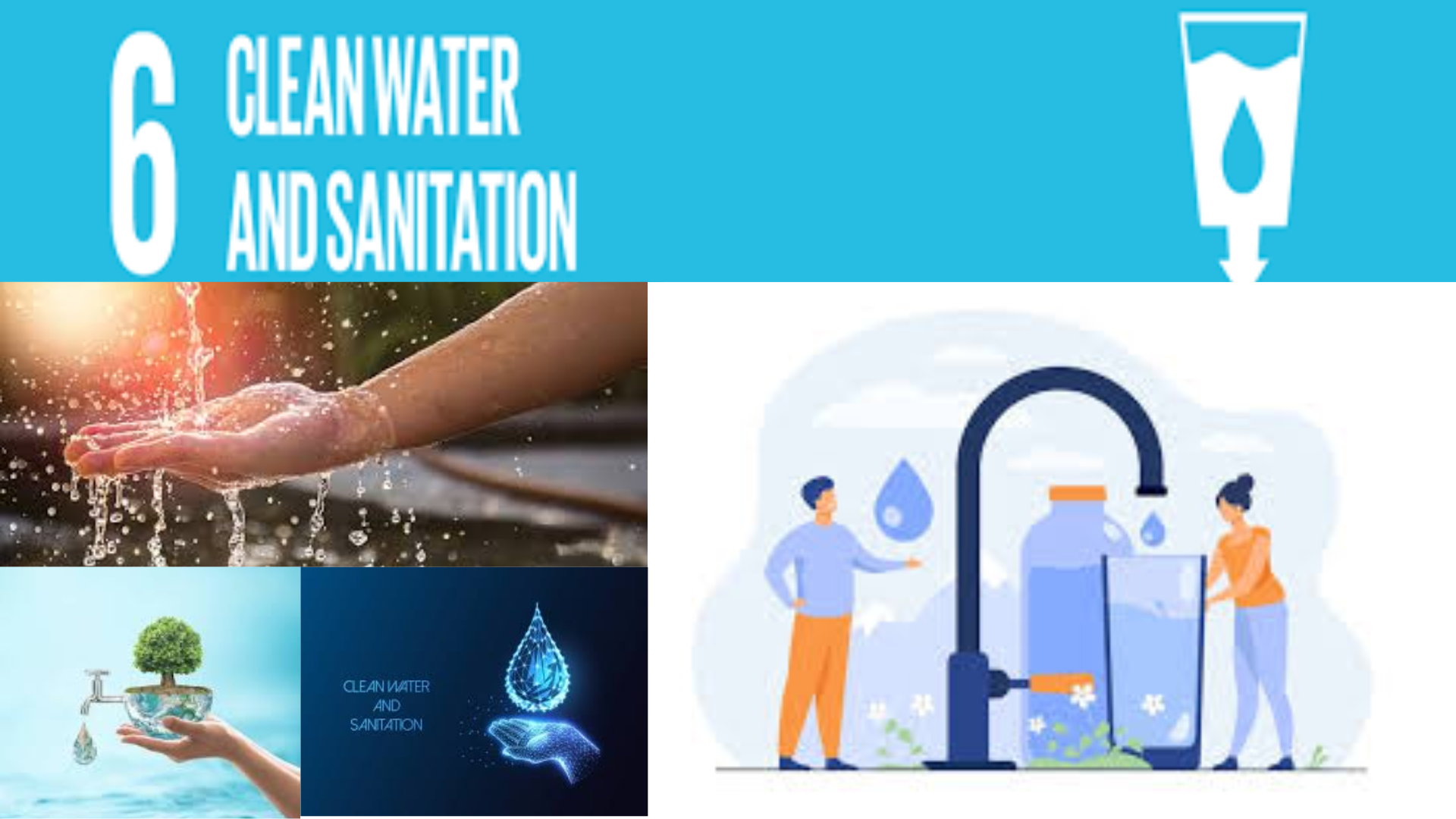💧 SDG 6: Clean Water and Sanitation
Goal:
Ensure availability and sustainable management of water and sanitation for all.
🌐 Why SDG 6 Matters
Water and sanitation are essential for life, health, and dignity. Lack of clean water and sanitation causes disease, hinders education, and limits economic opportunities.
-
🚰 Over 2 billion people lack safely managed drinking water at home.
-
🚽 Nearly 3.6 billion people don’t have safely managed sanitation services.
-
🌍 Water scarcity affects more than 40% of the global population, worsening with climate change.
-
🦠 Poor water and sanitation cause diarrheal diseases, leading to nearly 500,000 child deaths annually.
-
💧 Water is vital for food production, energy generation, and industrial activities.
-
💪 Sustainable water management improves health, supports ecosystems, and reduces poverty.
🧭 Key Targets of SDG 6
| Target | Description | Target Year |
|---|---|---|
| 6.1 | Achieve universal and equitable access to safe and affordable drinking water | 2030 |
| 6.2 | Achieve access to adequate and equitable sanitation and hygiene, and end open defecation | 2030 |
| 6.3 | Improve water quality by reducing pollution, minimizing release of hazardous chemicals | 2030 |
| 6.4 | Increase water-use efficiency across all sectors and ensure sustainable withdrawals | 2030 |
| 6.5 | Implement integrated water resources management at all levels | 2030 |
| 6.6 | Protect and restore water-related ecosystems, including wetlands and rivers | 2020+ |
| 6.a | Expand international cooperation and capacity-building in water- and sanitation-related activities | Ongoing |
| 6.b | Support local community participation in water and sanitation management | Ongoing |
📊 Progress and Challenges
Progress:
-
🚰 More people than ever have access to improved drinking water sources.
-
🚽 Increased access to basic sanitation facilities globally.
-
🌍 Growing investments in water infrastructure and technologies.
-
📊 Improved data collection and monitoring of water and sanitation coverage.
Challenges:
-
🚱 Billions still lack safely managed water and sanitation services.
-
🌪️ Climate change causes more droughts and floods, disrupting water supplies.
-
🧪 Pollution from agriculture, industry, and households contaminates water bodies.
-
💧 Overuse and inefficient water use strain freshwater resources.
-
🏘️ Rural and marginalized communities face the greatest barriers.
-
🛠️ Infrastructure gaps and lack of financing hinder progress.
🧠 Who Is Involved?
-
Governments: Develop and maintain water and sanitation policies, infrastructure, and regulations.
-
UN Agencies: UNICEF, WHO, UN-Water coordinate global efforts and standards.
-
NGOs and Community Groups: Provide services and raise awareness on water, hygiene, and sanitation.
-
Private Sector: Innovate and invest in water technologies and infrastructure.
-
Researchers: Study water cycles, pollution, and sustainable management.
-
You!: Practice water conservation, support sanitation projects, and advocate for equitable access.
🌐 International Agreements Supporting SDG 6
-
UN-Water Global Analysis and Assessment of Sanitation and Drinking-Water (GLAAS) – Tracks global water progress.
-
Human Right to Water and Sanitation (UN, 2010) – Recognizes access as a fundamental human right.
-
The Water Action Decade (2018–2028) – A global initiative to accelerate SDG 6 achievement.
-
Ramsar Convention (1971) – Focuses on wetland conservation.
🧩 How You Can Help
-
💧 Use water wisely — fix leaks, take shorter showers, water plants responsibly.
-
🚱 Avoid polluting water sources — properly dispose of chemicals and waste.
-
🚽 Support or volunteer with local sanitation and hygiene initiatives.
-
🗣️ Educate your community about water conservation and hygiene.
-
🌿 Advocate for policies that protect water ecosystems.
-
💸 Donate to organizations working on water access and sanitation.
-
🏡 Promote sustainable water use practices at home and work.

